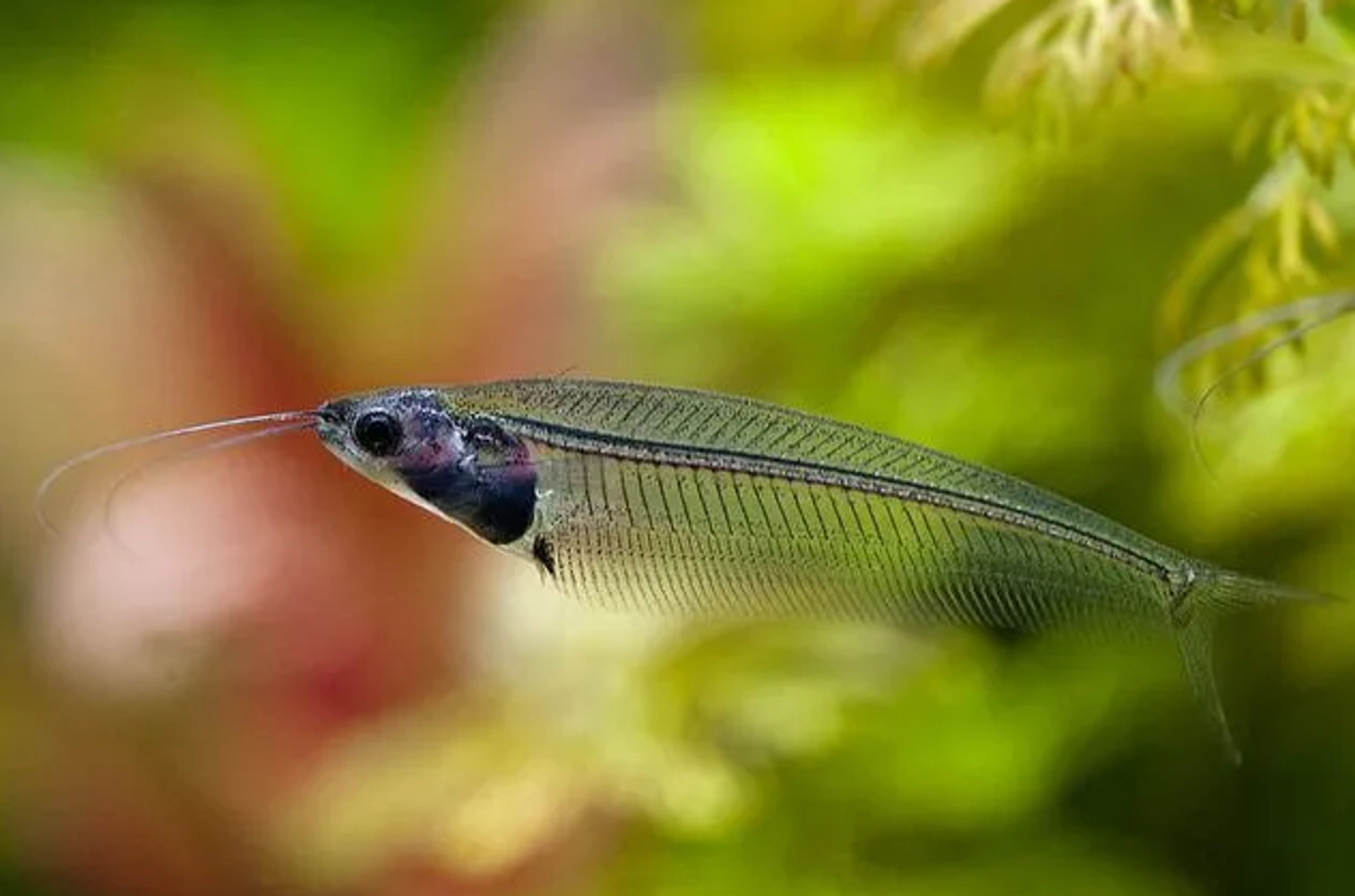

Product Details

Size
3cm - 4cm

Temperament
Peaceful
"Discover the ethereal Thai Glass Catfish! Known for their transparent bodies and peaceful nature, these unique fish add elegance to any aquarium."
Overview: The Thai Glass Catfish (Kryptopterus vitreolus) is a captivating and translucent freshwater fish originating from the rivers and streams of Southeast Asia, particularly Thailand. Named for their transparent appearance, these fish are prized for their unique aesthetic and peaceful temperament. Thai Glass Catfish are schooling fish, best kept in groups to feel secure and exhibit their natural shoaling behaviors. With proper care and a suitable environment, they can thrive and become a fascinating addition to a community aquarium.
Appearance:
- Transparency: Thai Glass Catfish are almost entirely transparent, with their skeletal structure and internal organs faintly visible. They have a ghostly appearance that reflects light beautifully.
- Body Shape: They have a slender and elongated body, resembling a thin ribbon, with a slightly forked tail and an upturned mouth.
- Size: Thai Glass Catfish can grow up to 3-4 inches (7.5-10 cm) in length when fully mature.
Water Conditions: To ensure the well-being of Thai Glass Catfish, maintain specific water parameters that resemble their natural habitat:
- Temperature: 72-78°F (22-26°C).
- pH Range: 6.0-7.5.
- Water Hardness: 2-15 dGH.
- Tank Size: A minimum tank size of 20 gallons is recommended to provide ample swimming space for a small group. Larger tanks are preferable for maintaining stable water conditions and accommodating a larger school.
Tank Setup: Creating an optimal environment for Thai Glass Catfish involves several key considerations:
- Substrate: Use a dark substrate such as fine gravel or sand to enhance the visibility of their transparent bodies.
- Decor: Provide plenty of hiding spots with driftwood, rocks, and dense vegetation like Java ferns and Anubias. Floating plants can also help diffuse light and create shaded areas.
- Filtration: Use a gentle filtration system with minimal water flow to prevent stress. Sponge filters or canister filters with adjustable flow settings are ideal.
- Lighting: Moderate to subdued lighting is recommended to mimic the dimly lit conditions of their natural habitat and minimize stress.
Tank Mates: Thai Glass Catfish are peaceful and best kept with other non-aggressive fish that prefer similar water conditions:
- Compatible Species: Small tetras (such as Neon Tetras or Cardinal Tetras), rasboras, dwarf gouramis, small peaceful loaches (like Kuhli Loaches), and peaceful bottom dwellers like Corydoras catfish.
- Incompatible Species: Avoid keeping them with larger or aggressive fish that may intimidate or prey on them. Also, avoid fin-nipping species that could harm their delicate fins.
Feeding Habit: Thai Glass Catfish are primarily carnivorous and should be provided with a varied diet to maintain their health:
- Staple Diet: High-quality flake or pellet food designed for small, carnivorous fish. They also enjoy frozen or live foods such as bloodworms, brine shrimp, and daphnia.
- Supplements: Offer occasional treats of blanched vegetables like zucchini or cucumber to provide fiber and additional nutrients.
- Feeding Frequency: Feed small portions 1-2 times daily, ensuring they consume the food within a few minutes to prevent overfeeding and maintain water quality.
Care and Maintenance: Regular care and maintenance are essential for the well-being of your Thai Glass Catfish:
- Water Changes: Perform weekly water changes of 20-30% to maintain water quality and remove accumulated waste.
- Health Monitoring: Monitor their behavior and appearance daily. Watch for signs of disease, stress, or abnormal swimming patterns.
- Behavioral Observation: Thai Glass Catfish are nocturnal and prefer low-light conditions. They are peaceful and spend much of their time swimming in schools.
Breeding: Breeding Thai Glass Catfish in captivity is challenging and rarely accomplished in home aquariums:
- Pair Selection: Breeding pairs should be selected from a group of healthy and mature individuals displaying good coloration and overall condition.
- Breeding Setup: Set up a separate breeding tank with soft, slightly acidic water (pH around 6.5) and a temperature of 78-80°F (25-27°C). Provide spawning mops or fine-leaved plants for egg deposition.
- Spawning Process: The female will scatter adhesive eggs among plants or substrate, which the male will fertilize. After spawning, remove the adults to prevent them from eating the eggs.
- Fry Care: Fry hatch within 24-48 hours and should be fed infusoria or commercially available liquid fry food until they are large enough to accept baby brine shrimp or finely crushed flake food.
Thai Glass Catfish
Product Options
5 pieces
10 pieces
Delivery
Quantity
 FishyHub Livestock SG
FishyHub Livestock SG Aquarium Fishes, Tanks & Supplies From FishyHub Livestock SG


 SG
SG



